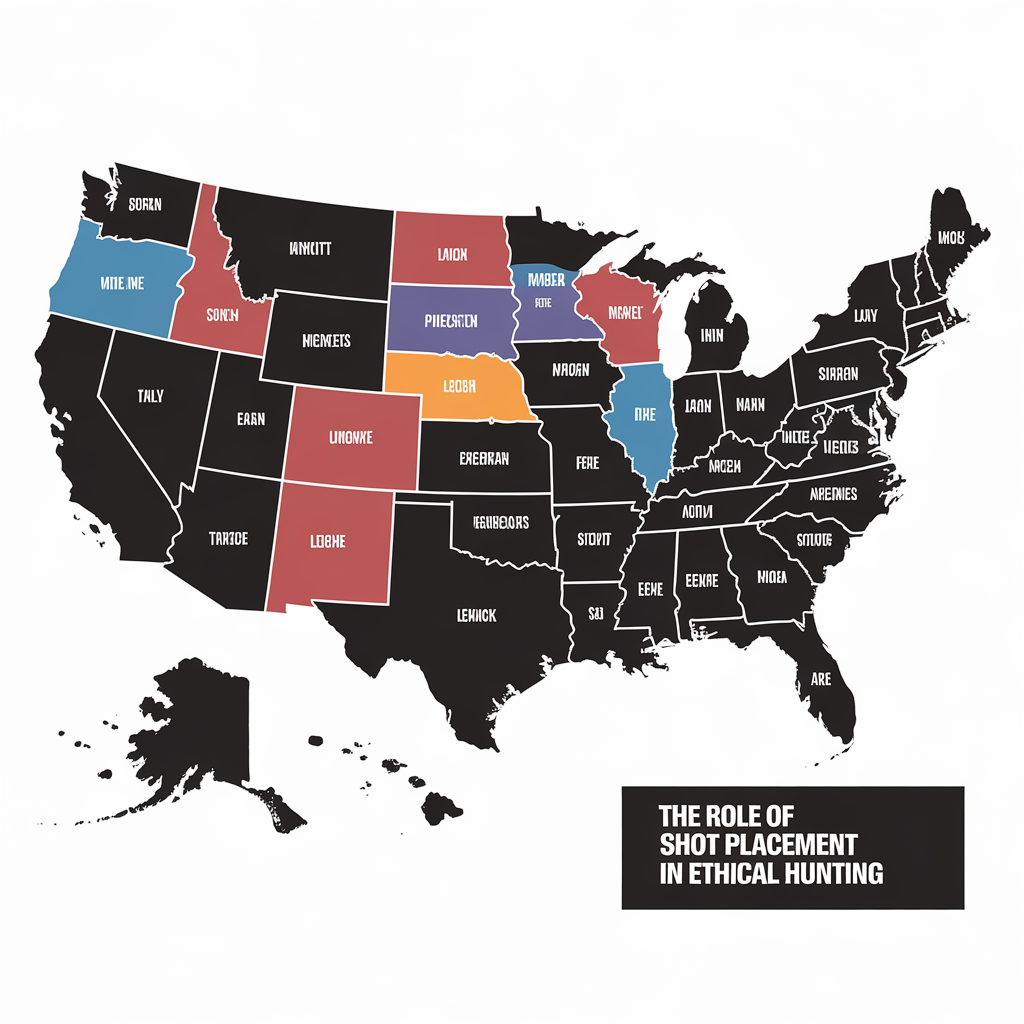The Role of Shot Placement in Ethical Hunting

Ethical hunting demands more than just skill with a firearm or bow. It requires responsibility, respect for wildlife, and making decisions that ensure humane outcomes. One of the most critical aspects of this practice is shot placement. Understanding and applying proper shot placement not only improves hunting success but also aligns with ethical principles by minimizing animal suffering.
What Is Shot Placement?
Shot placement refers to the specific area of an animal’s body where a hunter aims to deliver a lethal shot. The goal is to target vital organs, such as the heart and lungs, to ensure a quick and humane kill. For ethical hunters, knowing the anatomy of their quarry is essential. Correct shot placement reduces the likelihood of wounding an animal and leaving it to suffer.
Why Shot Placement Matters in Ethical Hunting
Hunting is not just about harvesting game; it is about maintaining respect for wildlife. Poorly placed shots can lead to prolonged suffering, making it harder to track and recover the animal. Ethical hunting practices prioritize accurate and humane shots.
Key reasons why shot placement matters include:
- Ensuring Humane Outcomes: A well-placed shot spares the animal unnecessary pain and suffering.
- Tracking and Recovery: Precise shot placement increases the likelihood of a quick kill, making it easier to locate the animal.
- Improving Success Rates: Hunters with solid shot placement skills are more likely to achieve clean kills.
Understanding Vital Zones
The vital zones of most game animals include the heart and lungs. These organs are typically located in the chest cavity. A shot to this area ensures rapid blood loss, causing the animal to expire quickly. Let’s break this down:
The Heart
The heart is a small, muscular organ that pumps blood throughout the body. It is often positioned low and slightly behind the front shoulder. A direct hit to the heart leads to rapid incapacitation.
The Lungs
The lungs fill with air and are central to oxygenating the blood. The lungs surround the heart and provide a larger target area. Striking the lungs often results in death within seconds to minutes.
Angles and Their Importance
Animals rarely stand perfectly broadside, so understanding angles is critical. Specific strategies depend on the position of the animal:
- Broadside Shot: This is the ideal scenario, where the side profile of the animal is fully visible. Aim slightly behind the shoulder to target the heart and lungs.
- Quartering-Away Shot: The animal is angled away from the hunter. Aim behind the shoulder and towards the chest cavity for a clean shot.
- Quartering-Toward Shot: This angle is less desirable but sometimes unavoidable. In this position, shot placement requires careful consideration due to the increased risk of hitting non-lethal areas.
Tips for Improving Shot Placement
Achieving effective shot placement takes preparation and practice. Here are several tips to help hunters improve:
- Study Anatomy: Familiarize yourself with the anatomy of the game species you hunt. Know where the vital organs are located and how they are protected by bones or muscles.
- Practice Regularly: Consistent practice at various distances and angles improves both accuracy and confidence. Consider practicing on 3D targets that resemble real animals.
- Use Proper Gear: Ensure your firearm or bow is suited to the game you are hunting. Match your ammunition or arrows to the size and type of your target.
- Patience Is Key: Wait for the right shot opportunity. Avoid taking low-odds shots, as they increase the risk of wounding rather than killing.
- Know Your Limits: Be honest about your abilities. Avoid taking shots that are beyond your effective range or skill level.
Practical Example of Shot Placement
Imagine you’re hunting whitetail deer with a rifle, and one steps into a clearing at 80 yards. The deer is broadside to you, giving you a clear view of its chest. The vital organs are located just behind its shoulder. You take a deep breath, steady your aim, and gently squeeze the trigger. This is a textbook example of shot placement, targeting the heart-lung area to ensure an ethical harvest.
Modern Tools That Help Improve Shot Placement
Today’s hunters can take advantage of technology to improve shot placement. Equipment such as rangefinders and ballistic calculators can help estimate distances and adjust for environmental factors. Furthermore, apps and online resources provide detailed anatomy charts for almost any game species, helping hunters visualize their target zones more effectively.
Common Pitfalls to Avoid
Even seasoned hunters make mistakes. Avoid these common pitfalls to maintain ethical hunting practices:
- Rushing the Shot: Hasty shots often result in poor placement. Take time to carefully aim.
- Ignoring Wind and Distance: Environmental factors like wind direction and bullet or arrow drop can drastically affect shot accuracy. Adjust for these variables pre-shot.
- Shooting Through Obstructions: Branches or tall grass can deflect projectiles, leading to missed or wounding shots.
Ethical Practices Beyond Shot Placement
While shot placement is critical, ethical hunting involves more than just where you aim. After taking a shot, hunters must prioritize tracking and recovery. Ensure you have the skills needed to follow a blood trail and locate your harvest. Equally important is respecting property boundaries and legal regulations while hunting.
Final Thoughts on Shot Placement
The role of shot placement in ethical hunting cannot be overstated. It defines the line between a responsible hunter and someone who inadvertently causes harm. By understanding anatomy, practicing regularly, and knowing your limits, you can enhance your skills while adhering to ethical principles. A clean, humane kill honors the animal’s life and upholds the integrity of the hunting tradition.
For more insights into ethical hunting practices and firearm expertise, explore 2AGun.com. Equip yourself with knowledge, hone your skills, and grow as a hunter who respects wildlife and the legacy of the hunt.


